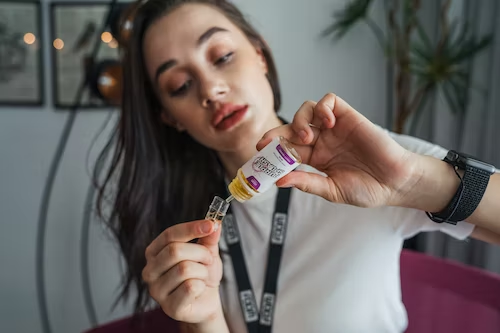Propylene glycol (PG) and vegetable glycerine (VG) are words you will frequently notice when shopping for vape juice at vape stores. They are mentioned in the product descriptions of each e-liquid, such as Ice Lollies E-Liquid and all others and are even printed on the labels of most vape juices. If you vape, there is no way to avoid PG and VG.
You should know what they contain because they are even more crucially essential to the quality of your vaping experience. So what are VG and PG? You're about to learn why it's necessary to keep PG and VG in mind when you buy e-liquid online because they're the two substances in every bottle of vape juice in the greatest possible quantity.
What Is Propylene Glycol (PG)?
A synthetic chemical, propylene glycol, can be produced from various materials, including propylene oxide and vegetable glycerine. It has a little more viscosity than water and hardly any flavour or aroma. Here are a handful of its applications.
- PG is used to transport flavours, perfumes, and medications since it is a suitable solvent. For instance, it is present in several asthma inhalers.
- PG serves as an emulsifier, keeping liquid substances well-mixed. It is beneficial as an ingredient in cosmetics, lotions, and hair care products because of its emulsification capabilities.
- Because PG prevents microbiological growth, it is a component of deodorants and air fresheners.
- PG is a component of several eye drops because it draws moisture from the atmosphere.
What Is Vegetable Glycerine (VG)?
Vegetable glycerin, in contrast to PG, is produced naturally. It is created using the same chemical procedure as soap. A chemical reaction occurs when Lye is added to oil, resulting in soap and glycerine. The reaction produces vegetable glycerine if vegetable oil is utilised as the starting material. Animal-based glycerine can be used to make soap and other items, but it is not utilised to make e-liquid. Here are some uses for vegetable glycerin.
- VG has a mildly sweet flavour; it is sometimes used in place of or in addition to other sweeteners in some foods and beverages.
- VG can be used in place of PG as an emulsifier for lotions, cosmetics, shampoos, and other topical goods since it has emulsification capabilities similar to PG. Due to its moisturising qualities, VG functions remarkably well in those products.
- VG absorbs and holds moisture, possibly even better than PG. It is utilised as a component in shelf-stable baked products and other delicacies since it is a potent moisturiser with a mildly sweet taste, helping keep that food from becoming stale.
How Do PG and VG Affect Your Vaping Experience?
Here are some ways the different PG/VG ratios affect your vaping experience.
- A high-PG e-liquid produces a little scratchy throat sensation that contributes to a powerful throat hit. In a mouth-to-lung vaping situation with a higher nicotine e-liquid, you might prefer a high-PG vape.
- An e-liquid with a high VG content will be incredibly smooth and have a somewhat sweet flavour. You might appreciate how the VG heightens the e-natural liquid's sweetness if you prefer e-liquid with lower nicotine content.
- An e-liquid with a high PG content is thin enough to function in portable vapes without producing dry hits. You'll typically get the most performance from small vape pens and pod systems with high-PG e-liquids.
- High-VG e-liquids contain thick, significant vapour clouds and are pretty broad themselves. Because they create a lot of vapour, VG-based vape juices are typically used for cloud chasing. For high-VG e-liquids to function at their best, use a premium vape tank with low coil resistance.
Conclusion
At Juicedoutvapes, we provide a wide variety of top e-liquids from around the world, such as Dekang E-Liquid and other leading brands. Best prices guaranteed. Products and brands are frequently added. Contact us if you wish to sample authentic e-liquid.

